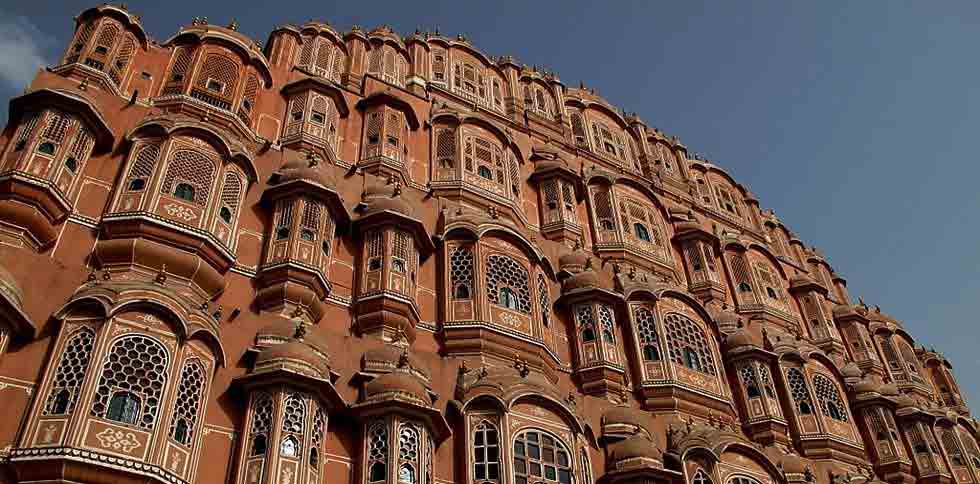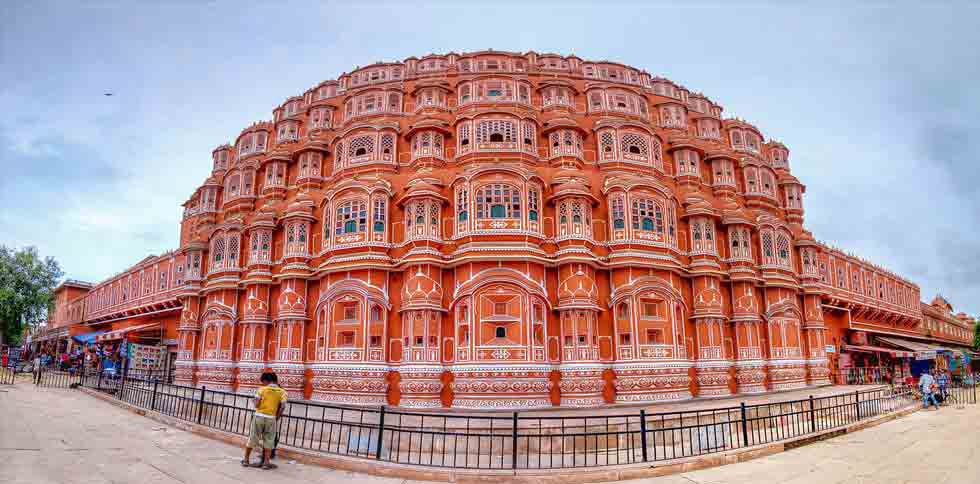Hawa Mahal Heritage Trip
Location :
It is very near to City Palace Jaipur & main shopping area of heritage city Jaipur.
About the Hawa Mahal ( Palace Of Winds ) :
Hawa Mahal is also popular as "Palace of Winds" and it is designed by Lal Chand Usta and this name of the palace is given because Hawa Mahal has about 953 windows through which wind or (hawa) flows and keep the palace cool.
Hawa Mahal Built in 1799 by Maharaja Sawai Pratap Singh, Hawa Mahal is the most stunning sight in the city of Jaipur. The palace, part of a huge complex, overlooks one of Jaipur's main streets. It is believed to build for the women of the Royal Families, since they had to observe strict "purdah" (cover). The small windows and screened balconies serve the women to watch processions and different activities taking place on the streets. In this manner, the women could enjoy a sense of freedom without showing themselves.
Architecture of Hawa Mahal :
The Hawa Mahal is a great example of the Rajputana architecture, which was strongly influenced by Mughal style of architecture. This particular style of building that we observe in Hawa Mahal, uses the best features of Mughal architecture with other features that could better adapt to the inhospitable weather conditions of Rajasthan.
Hawa Mahal is a pyramid-shaped facade with five stories. It has 953 small windows decorated with tiny lattice work. These pink sandstone windows commonly known as "Jharokhas" are constructed in such a style, that it looks like a giant honeycomb. The air circulation through windows represents the marvelous touch of Mughal designing, which keeps the Palace always cool. The small screened balconies and arched roofs with hanging cornices enhance the beauty of the Palace. The Pyramidal outline and replication of pattern makes it more attractive in appearance.
As a matter of fact, Hawa Mahal is believed to build for the women of the Royal Families, since they had to observe strict "purdah" (cover). The small windows and screened balconies serve the women to watch processions and different activities taking place on the streets. In this manner, the women could enjoy a sense of freedom without showing themselves.
Climate :
Summers are quiet warm with temperature rising up to 45 'C and proper care should be taken of water intake to stay fit during these conditions. In winters days are usually fine but during the night time temperature might drop to about 3 'C.
Best time to visit Hawa mahal :
October to February. During this period, the heat of the desert sun is less intense, the weather is cool and it is the best season for going sightseeing. The Elephant Festival and the Gangaur Festival are held in Jaipur at the tail end of March; another good reason to plan a trip as winter is on the wane and summer is yet to set in.
How To Reach hawa Mahal :
Air : Jaipur is connected to Delhi (300Km), Mumbai, Udaipur, Jodhpur, Aurangabad, Calcutta and Varanasi by domestic flights.
Rail : The train service to Jaipur is available from all the major parts of the country.
Road : Jaipur can be accessed from all the major places in Rajasthan, Gujarat, Delhi and Mumbai by bus.
hawa Mahal Timing :
10 a.m. - 4.30 p.m. Free on Monday and closed on Friday
YOUR REQUEST FORM
Provide Us Your Details & Requirements To Prepare The Best Tailor made & Customized Tour Itineraries For Agra Taj Mahal India & its Nearby Tourist Destinations
| All Fields marked with (* ) are required. |

